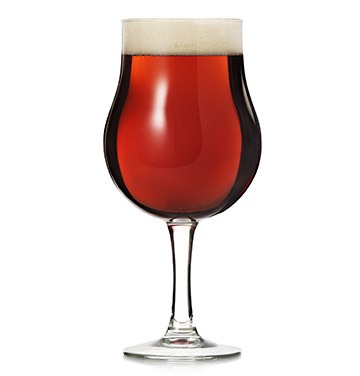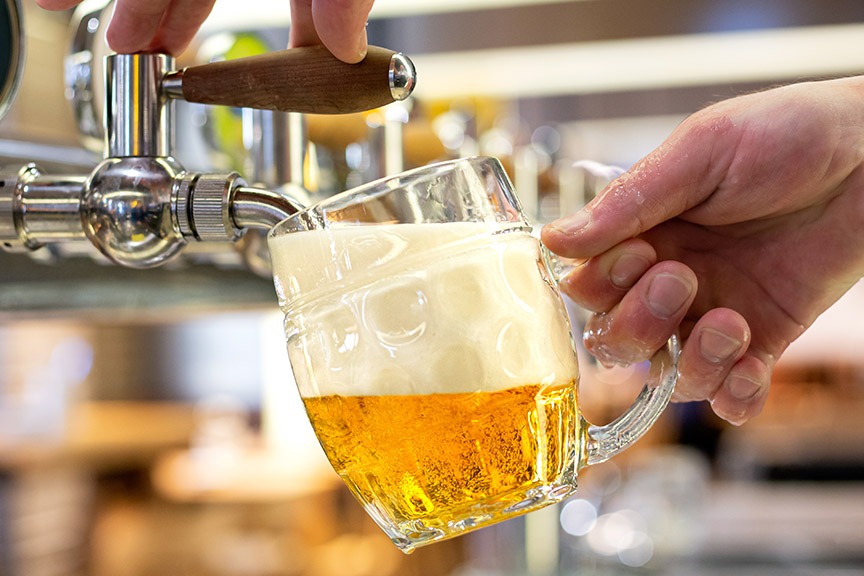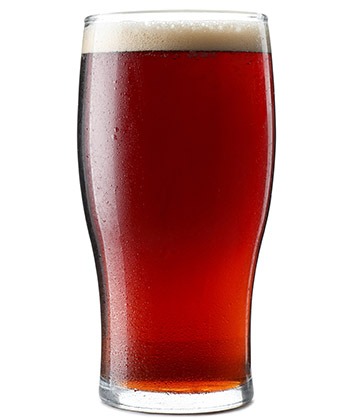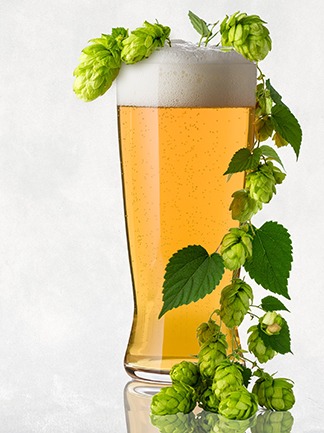Italian Pils
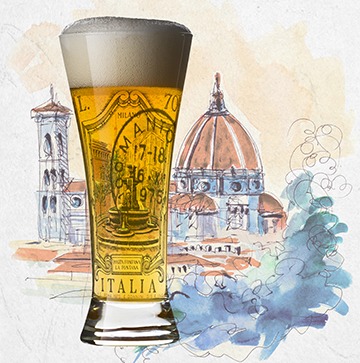
One sure sign that a beer style is catching on is when brewers start to experiment with it and develop creative variations on the foundation theme. This is what happened, for instance, with the original India pale ale, which eventually evolved into, among other substyles, a West Coast IPA, a black IPA, a New England IPA, a brut IPA, and even an India Pale Lager (IPL). Another style is the stout, which evolved between the 16th and 18th centuries in England from “stout” ales and porters and now encompasses several classic new styles, including Irish, oatmeal, milk, and Russian imperial stouts, as well as modern barrel-aged, soured, chocolate, and even super-sweet, so-called pastry stouts.
The latest style to have drawn the brewing community’s innovative attention is the Czech Pilsner from the mid-nineteenth century, as well as its German cousins, the Northern German and the Bavarian Pilsners, or Pils for short. The most recent modern modification of these original brews comes, perhaps surprisingly, from Italy. Its name: Tipopils, a brilliantly golden-blond, highly hop-aromatic, effervescent lager with about 5.2% ABV, created in 1996 by Agostino Arioli, Owner/Brewer of Birrificio Italiano in Milan.
Like the beers on which it was modeled, Tipopils sports a firm and inviting white head, a clean and delicate maltiness, and a bouquet that is redolent with earthy, floral, and spicy notes of fragrant hops, often noble varieties from Germany, but also hops from Czechia, Slovenia, and Alsace. During a telephone interview last October Agostino elaborated, saying his objective was to create a dry-hopped German-style lager with an exceptionally “fresh” hop bouquet. This approach fits into his general view that “the distinctive point of craft beer has always been the hops. Thus, hops are the central message of craft brewing.”
A Pioneering Dry-Hopped Lager
The inspiration for the Tipopils came to Agostino during several business trips to Germany and the United Kingdom in the early 1990s. While in Germany Agostino discovered the wonderfully dry and pleasantly crisp taste of the northern German Pilsner. He was particularly enamored with Jever Pils, a golden lager made by a brewery in the small Frisian town by the same name, which is tucked away in the northwestern part of the state of Lower Saxony. He still remembers the balanced interplay between the clean maltiness of that brew and its floral, “non-citrusy” hoppiness. It was this balance that Agostino found largely absent from other classic German blond lagers, such as the Bavarian helles, which he thought was less edgy because of its more pronounced malt dominance. Agostino’s second discovery of “the magic of hop,” as he now puts it, was in Great Britain when he had his first taste of a traditional, cask-conditioned ale that was dry-hopped right in the cask.

Agostino had been a homebrewer since 1985. Upon his return from abroad, he resolved to start his own craft brewery, which he did in 1996, in Milan. The first beer he made in his new Birrificio Italiano was a marriage between what he considered the best of two brewing worlds, the British and the German. He combined the lager-making brewhouse processes from the German tradition with the cellar processes of maturation on hops from the British tradition. For his selection of raw materials he gave Germany a slight edge. The grain bill for Tipopils could not have been simpler: A top-quality German Pilsner base malt plus a miniscule amount of light-colored caramel malt for some added maltiness and extra mouthfeel. For this first brew, Agostino used 99 percent Pilsner malt plus a mere 1 percent Caramunich® Type 2, while the bittering hop was the German-grown, Galena offspring, Magnum; the flavor hop was the German-grown Northern Brewer offspring, Perle; and the aroma and dry hops were an equal mix of the German landrace Hersbrucker and the Czech landrace Saaz.
As Agostino tells it, his Tipopils was unique. For one thing, it differed from virtually all other lagers available in Italy at the time, which were almost devoid of hops — perhaps with the sole exception of the South Tyrolian Forst V.I.P Pils. For another, the beer was modeled on a German brew, but in that country, dry hopping was then considered not only microbially unsafe but perhaps even illegal, given the restrictions of the country’s five centuries-old Beer Purity Law, the Reinheitsgebot. It was only in January 2012 that the German and the Bavarian Brewers Federations jointly removed this ambiguity by declaring that the erstwhile “un-German” practice of dry hopping was henceforth and unequivocally in perfect harmony with the Reinheitsgebot.
The Evolution of the Tipopils into the Italian Pilsner Style
Brewing raw materials have evolved significantly since Agostino developed his Tipopils in the mid-1990s. Barley breeders have created new varieties for malting and brewing; and hop breeders around the world have released many new hops, some with classic flavors and aromas, and others with entirely new tastes. As a result, Agostino has made several changes to his recipe over time with the objective of preserving the sensory characteristics of his original brew. In addition, craft brewers especially in North America have discovered the Tipopils and created their own interpretations of the brew, thus turning it into a new beer style, now often referred to as the Italian Pilsner or Italian Pils.
This beer even has its own annual beer fest, initially named Pils Pride. It started in Milan in 2005 at Birrificio Italiano and has since become a transatlantic affair, renamed Pils and Love, which is now organized in collaboration with Firestone Walker Brewing Company of Paso Robles, California, and Oxbow Brewing Company of Newcastle, Maine. The first fest in the New World took place in 2017 in Portland, Maine; the second one, in 2018, in Los Angeles, California. For the third staging, the fest returned to Portland, this time with participation from breweries in the United States, Canada, Germany, and Italy. The 2020 event, scheduled to be held again in Los Angeles, unfortunately, had to be postponed because of the COVID pandemic.

In North America, Italian Pilsners are now brewed from coast-to-coast. Here are a few examples:
Perhaps the most famous North American interpretation of the Italian Pils is the roughly 40 IBU, 5% ABV Pivo Pilsner created by Brewmaster Matt Brynildson of Firestone Walker. As Matt elaborates, this beer is made with Weyermann Pilsner as a base malt plus, like many craft-brewed versions, with 5 percent Weyermann Carafoam®. The bittering hop is Magnum at the start of the boil, while two additions of Spalter Select at 30 and 10 minutes before flameout provide the flavor. Finally, two additions of the fruity, spicy, and floral German Saphir provide the aroma in the whirlpool and as a dry hop after fermentation. Saphir was released by the Hüll Hop Research Center in 2002, and Matt was the first brewer to use it as an aroma hop in an Italian Pilsner.
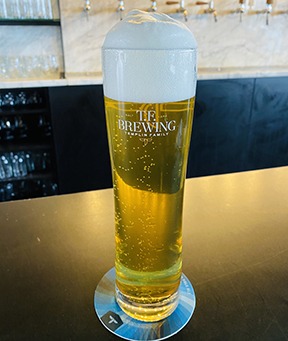
In Salt Lake City, Utah, Kevin Templin, Owner/Brewer of TF Brewing, has created a very drinkable, single-step infusion interpretation of the style, which he calls Adriatic Pilsner. He relies on Weyermann Eraclea Pilsner as a base malt and, as Matt does, on a small amount of Carafoam®. His hops are entirely Slovenian, which give the beer, in Templin’s words, “an herbal, mint-like quality.” For bittering and flavor, Kevin adds Styrian Bobek (a diploid aroma hybrid between Northern Brewer and an unknown seedling). The aroma hop is the intense Aurora, which has the same genetic origin as Bobek. It goes into the whirlpool and also serves as the dry hop. He ferments this lager at a low 45 °F (7 °C) and allows it to mature gespundet (“bunged”) for five weeks, for natural carbonation and effective sedimentation.
At Schilling Beer Company of Littleton, New Hampshire, Partner/Brewer John Lenzini makes a single-decoction, 5% ABV Italian Pilsner called Birra Alpinista. As John explains, this interpretation of an Italian Pilsner relies on Weyermann Bohemian Pilsner and Eraclea base malts, as well as a small addition each of Carafoam® and acidulated malt. The hops in the Birra Alpinista are, again, Magnum for bittering, as well as Hersbrucker and Styrian Bobek for flavor and aroma (including for dry hopping). The brewery describes this creation as an “indelibly pale lager” with a bouquet of “delicate scents of chrysanthemum and lemony verbena, a color of light straw,” as well as “a dry, crackery grist character that is balanced by cold dry hopping with noble varietals.”
In Kittery, Maine, Tod Mott, Owner/Brewer of Tributary Brewing Company, makes a 5% ABV, 32-IBU Italian Pils with a grain bill of Weyermann Eraclea Pilsner base malt and a smidgen each of Carafoam® and acidulated malt. The Tributary’s hop profile is a German-Slovenian combination of Magnum and Hallertauer Mittelfrüh for bittering at the start of the boil and Slovenian Celeia for flavor, added 20 minutes before flameout, as well as Hallertauer Mittelfrüh for aroma, added five minutes before flameout. The Tributary interpretation of this style is cold-fermented and then lagered for about five weeks but, unlike most other versions, is not dry hopped. Tod describes his brew as an “exceptionally light, crushable Pils with delicate bready notes and true noble hop aromatics.”
This article features three additional Italian Pils recipes on pages 44–45. The first is an exact clone of the 1996 original Tipopils by Agostino Arioli, while the other two, the Birra Mediterranea and the Birra Venezia, were created by the authors and brewed at the Weyermann Malting Company in Bamberg, Germany.
Process Notes for Italian Pils
The following is a summary of an ideal procedure for an Italian Pils decoction or infusion (or a combination of both). Depending on available equipment, not all brewers will be able to follow each of the steps outlined, in which case select a starting temperature that is proven to work with your setup.
• Mash the milled grain at a liquor-to-grist ratio of approximately 3:1 at roughly 68 °F (20 °C).
• Raise the mash temperature slowly to 151 °F (66 °C) for a 10-minute rest.
• Raise the mash temperature slowly to 162 °F (72 °C) for a 20-minute rest.
• Raise the mash temperature slowly to 170 °F (77 °C) for a 10-minute rest.
• Recirculate until the runnings are clear.
• Lauter and sparge slowly.
• Boil for 60 to 90 minutes.
• Boil bittering hops for 60 minutes.
• Boil flavor hops (if used) for about 15 minutes.
• Boil aroma hops between 0 and 10 minutes; or add to the whirlpool.
• Heat-exchange to about 52 °F (11 °C), depending on yeast selection.
• Aerate wort (if using liquid yeast).
• Pitch yeast.
• Allow fermentation temperature to rise to 55 °F (13 °C), depending on yeast section.
• Primary ferment for about one week.
• Rack brew for lagering.
• Add dry hops on top of the lagering vessel and crash the temperature to 36 °F (2 °C) or as close to this temperature as your equipment allows.
• Let the hops settle slowly for 3–4 days while imparting delicate aromas to the brew.
• Rack brew off all debris including hop sediment.
• Lager for another four weeks in a capped tank.
• Rack again (filtration optional).
• Prime (if used) or carbonate the finished beer to a substantial, German-style effervescence of about 2.2–2.7 volumes (4.4–5.4 g/L) of CO2 and package.
• Serve at 46–50 °F (8–10 °C).
Note
Because of the simplicity of the above grist bill, there is no extract-plus-steeped-grain recipe for Italian Pils. Pure extract brewers can simply substitute the entire grain bill with a Pilsner extract and follow the above process, starting with the boil. I recommend, and am most familiar with, the Bavarian Pilsner extract from Weyermann. This Bavarian Pilsner extract is mostly Pilsner malt plus a small addition of Carafoam®. The liquid extract contains 72–79 percent malt solids by weight. Therefore, use about 7.15 lbs. (3.25 kg) of extract for
a batch size of 5 gallons (19 L).
Hops: Aroma Rules
The key to the hop selection for this beer is a combination of central European (German, Czech, Slovenian, or Alsatian), rather than American or British varieties. As a very rough generalization, central European hops tend to have aromas that we identify as floral, herbal, and fruity. Faint traces of woody and peppery-spicy notes may also be present. American hops, by contrast, often have dominant or even aggressive taste profiles of citrus (like lemon or grapefruit), as well as notes of pine and resin, and some “cattiness,” sometimes comingled with a bouquet of tropical fruit. British hops, on the other hand, are often described as earthy, grassy, floral, lemony, wood-like, minty, or tea-like.
For the aroma hop addition added at the tail end of the boil (or at the beginning of whirlpooling) and during dry hopping, the Italian Pils brewer has a wide range of choices, as long as these meet the criterion of being spicy-floral.
Malts: Italian and German
The base malt selection must lend itself to a harmonious pairing with delicate noble hop aromas. Some maltiness must be present, but it should not be too bready, nor too sweet or too melanoidin-caramel-like. Malts with pronounced flavors of nuts, chocolate, roast, or smoke are also not suitable. Therefore, top-quality Pilsner malts, as well as extremely delicate pale ale malts are possible candidates, whereby there are subtle, nuanced distinctions in the taste of the finished beers, depending on the various types of base malt.
To summarize, the key features of an Italian Pils are:
• Delicate Pilsner malts.
• A noble hop bitterness with virtually no catty, citrus, pine, or resin notes.
• Pronounced fresh hop aromas from dry hopping with noble varieties or similar.
• Neutral lager yeasts.
Birra Mediterranea & Birra Venezia: Two Cutting-Edge Italian Pils Innovations
Based on the guidelines described earlier, the Birra Mediterranea and Birra Venezia presented on the previous pages are pioneering brews with raw materials that were not even released by the mid-1990s when the style was created. While the Mediterranea brew uses Celeia, the Venezia brew uses Vanguard hops from the German Hop Research Center in Hüll that were bred recently for more pronounced classic aromas and improved drought- and disease-resistance.
For bittering the Birra Venezia, we selected Hallertauer Blanc with its white wine aromas. The flavor hop in the middle of the 90-minute boil is the appropriately named Hüll Melon, while the aroma hops are a mixture of the brand new Tettnanger offspring Aurum and the Spalter offspring Diamant, both added in the whirlpool and the lagering tank. They contribute a lingering noble, hoppy-fresh, herbal-spicy, and floral bouquet to the brew.
The malt in both recipes pushes the “Italian” aspects of the Tipopils style one step further by selecting the very pale, Italian-grown Eraclea Pilsner as a base malt that has a mildly sweet malt aroma that is dominated by notes of honey and mild hints of bread crust, toffee, and almond. This malt became available on a large scale only in 2018. It is made from barley that is cultivated exclusively in the distinct terroir and micro-climate of the eponymous Eraclea region of Italy, a well-drained alluvial plain that stretches along the northern shore of the Adriatic Sea.
Tasting notes by an array of experts, including Agostino, can be found with the Birra Venezia recipe. As you’ll see, this is a style that is perfect for any occasion — it’s light, crisp, clean, and has enough hop bite to keep you coming back for more. These characteristics make it easy to understand why the Italian Pilsner style created by a former homebrewer’s exploration and creativity has crossed oceans and become a favorite among many brewers worldwide.
Recipes
Birrificio Italiano’s Tipopils (1996) clone

(5 gallons/19 L, all-grain)
OG = 1.049 FG = 1.010
SRM = 4 IBU = 32 ABV = 5.2%
This is the original recipe brewed by Agostino Arioli in 1996, which launched the Italian Pilsner style. The recipe for Tipopils has evolved over the years to include new ingredients released after the original brew, however this version still makes for a tasty and fine example of Italian Pilsner.
Ingredients
9.8 lbs. (4.45 kg) German Pilsner malt
1.6 oz. (45 g) Weyermann Caramunich® II malt
6.5 AAU Magnum hops (75 min.) (0.5 oz./14 g at 13% alpha acids)
1.8 AAU Perle hops (45 min.) (0.3 oz./9 g at 6% alpha acids)
0.38 oz. (11 g) Hersbrucker hops (5 min.)
0.38 oz. (11 g) Saaz hops (5 min.)
0.38 oz. (11 g) Hersbrucker hops (dry hop) at start of lagering; for 3 days
0.38 oz. (11 g) Saaz hops (dry hop) at start of lagering; for 3 days
SafLager W-34/70, Wyeast 2124 (Bohemian Lager), or White Labs WLP830 (German Lager) yeast
¾ cup corn sugar (if priming)
Step by Step
Mash in at about 2 qts./lb. (4.2 L/kg) at 148 °F (64 °C) and hold at this temperature for 90 minutes. Raise temperature to mash out and recirculate for 15 minutes then begin to run off to the boil kettle. Sparge with enough acidified water to collect 7 gallons (26.5 L) in the kettle and then boil for 90 minutes, adding hops as indicated. You may opt to add a kettle fining and yeast nutrients in the final 15 minutes of the boil.
After the boil is complete, give the wort a long stir and allow break to settle for 10 minutes before beginning chilling process. Chill wort to 51 °F (11 °C) and transfer to the fermenter. If using a liquid yeast strain, aerate the wort well and pitch the yeast. Ferment at 53 °F (12 °C) until signs of fermentation slow. Slowly raise temperature to 59 °F (15°C) and hold for one week. Dump the yeast or transfer to a purged secondary vessel with the dry hops. Remove hops after three days and lager near freezing (~36 °F/2 °C) for three weeks, cooling slowly if possible (don’t cold crash). Rack again and then bottle and prime or keg and force carbonate.
Birrificio Italiano’s Tipopils (1996) clone
(5 gallons/19 L, extract with grains)
OG = 1.049 FG = 1.010
SRM = 4 IBU = 32 ABV = 5.2%
Ingredients
5.4 lbs. (2.45 kg) Pilsen dried malt extract
1.6 oz. (45 g) Weyermann Caramunich® II malt
6.5 AAU Magnum hops (75 min.) (0.5 oz./14 g at 13% alpha acids)
1.8 AAU Perle hops (45 min.) (0.3 oz./9 g at 6% alpha acids)
0.38 oz. (11 g) Hersbrucker hops (5 min.)
0.38 oz. (11 g) Saaz hops (5 min.)
0.38 oz. (11 g) Hersbrucker hops (dry hop) at start of lagering; for 3 days
0.38 oz. (11 g) Saaz hops (dry hop) at start of lagering; for 3 days
SafLager W-34/70, Wyeast 2124 (Bohemian Lager), or White Labs WLP830 (German Lager) yeast
¾ cup corn sugar (if priming)
Step by Step
Start with 6.5 gallons (24.6 L) water in the boil kettle. Place crushed grains in a muslin bag and steep as water heats up to 168 °F (76 °C). Remove grain bag and, off heat, stir in the malt extract. Once dissolved, turn heat back on and bring to a boil. Total boil time is 75 minutes adding the first hop addition at the start of the boil. Follow the remainder of the all-grain recipe instructions.
Birra Venezia
(5 gallons/19 L, all-grain)
OG = 1.049 FG = 1.010
ABV = 5.2% SRM = 5 IBU = 32
This Italian Pilsner has an aroma of citrusy lemon balm, herbaceous bergamot, and floral geranium, which are attributable primarily to the late hopping and dry hopping of the brew with both the Spalter descendant Diamant and the Tettnanger descendant Aurum.
Ingredients
9.4 lbs. (4.26 kg) Eraclea Pilsner malt
0.2 lb. (90 g) Caramunich® I malt
0.14 lb. (65 g) Carafoam® malt
0.2 lb. (90 g) acidulated malt
4.2 AAU Hallertauer Blanc hops (60 min.) (0.45 oz./13 g at 9.4% alpha acids)
2.8 AAU Hüll Melon hops (30 min.) (0.38 oz./11 g at 7.5% alpha acids
0.25 oz. (7 g) Diamant hops (0 min.)*
0.2 oz. (6 g) Aurum hops (0 min.)*
0.25 oz. (7 g) Diamant hops (dry hop)*
0.2 oz. (6 g) Aurum hops (dry hop)*
SafLager W-34/70, Wyeast 2124 (Bohemian Lager), or White Labs WLP830 (German Lager) yeast
¾ cup corn sugar (if priming)
*Diamant and Aurum are newer hop varieties that are not widely available in small quantities. If you cannot find them, a good substitution for Diamant would be German Saphir, Spalt, or Saaz, and a good substitute for Aurum would be German Tettnanger or German Northern Brewer. See Tips for Success for more on these substitutions.
Step by Step
Mash in moderately thick, at about 1.5 qts./lb. (3.1 L/kg) at roughly 68 °F (20 °C) (if possible). Raise the mash temperature slowly to 151 °F (66 °C) for a 10-minute rest. Raise the mash temperature slowly to 162 °F (72 °C) for a second, 20-minute rest. Increase the mash temperature slowly to 170 °F (77 °C) for a third, 10-minute rest. Recirculate until the runnings are clear and then sparge with enough acidified water to collect 6.75 gallons (25.5 L) in the boil kettle. Bring wort to a boil. Total boil time is 75 minutes, adding the first hop addition after 15 minutes. You may opt to add a kettle fining and yeast nutrients in the final 15 minutes of the boil.
After the boil is complete, add the final hop addition and give the wort a long stir. Allow break to settle for 15 minutes before beginning chilling process. Chill wort to 51 °F (11 °C) and transfer to the fermenter. If using a liquid yeast strain, aerate the wort well and pitch the yeast. Ferment at 53 °F (12 °C) until signs of fermentation slow. Slowly raise temperature to 59 °F
(15 °C) and hold for one week. Dump the yeast or transfer to a purged secondary vessel with the dry hops. Remove hops after three days and lager near freezing (~36 °F/2 °C) for three weeks, cooling slowly if possible (don’t cold crash). Rack again and then bottle and prime or keg and force carbonate.
Extract with grains version
Substitute 5.3 lbs. (2.4 kg) Pilsen dried malt extract and ½ tsp. 88% lactic acid for the Pilsner and acidulated malts in the all-grain recipe.
Start with 6.25 gallons (23.7 L) in the boil kettle. Place crushed grains in a small muslin bag and steep as water heats up to 168 °F (76 °C). Remove grain bag and, off heat, stir in the malt extract and the lactic acid. Once fully dissolved, turn heat back on and bring wort to a boil. Total boil time is 60 minutes adding the first hop addition at the start of the boil. Follow the remainder of the all-grain recipe instructions.
Tasting Sensory Evaluations
This recipe was first brewed in January 2021 specifically for this article. The all-grain recipe was taste-tested by several experts in Germany and Italy: Agostino Arioli, the developer of the original 1996 Tipopils, in Milan commented on the beer; as did Tullio Zangrando, the retired former Technical Director of Birra Moretti in Udine, in the Friuli-Venezia Giulia region of northeastern Italy. A team of tasters under the leadership of Walter König, the General Manager of the German Hop Research Center in Hüll in the Hallertau, and a team under the guidance of Brewmaster Constantin Förtner at the Weyermann Malting Company also judged the beer. Here is a summary of their assessments:
Visually, everybody agreed the beer impresses with its brilliant golden color and firm, creamy, white head. The bouquet reveals a complex of harmonious, inviting hop aromas of citrusy lemon balm, herbaceous bergamot, and floral geranium, which are attributable primarily to the late hopping and dry hopping of the brew with both the Diamant and Aurum. Genetically, these two hops are related to Saaz and have a noble-type alpha-to-oil ratio.
On the palate, the hop aromas intensify next to an emerging, high-quality, medium-intensity bitterness that is well integrated into a mild toffee and straw maltiness. Writes Agostino Arioli, “The bitterness is amazingly balanced, though sharp enough to be irresistible!” Walter König adds, “The malt selection provided a perfect backdrop for the intended hop aromatics; and both are carried into the well-rounded finish, which was floral, dry, and pleasantly resinous.”
This “clean tasting” beer (Tullio Zangrando) is “slender and well-balanced, with a classic Pils character” (Walter König). There was only one slight disagreement among the tasters: While the team at the Hop Research Center found the malt to be in ideal balance with the two new hops, Aurum and Diamant, Agostino Arioli “would have liked a bit more of hop flavor and aroma . . . in this fresh, dry-hopped lager,“ as well as fewer “mature” and more “green” hop notes. To him, the malt profile showed a bit too much “honey character.”
Overall, however, based on the tasters’ judgments, this gentle, easy-drinking Birra Venezia was considered true to its cosmopolitan lineage as a spritzy brew with southern German hop aromatics, an elegant bitterness, and a soft, delicate Italian maltiness, which complement each other to form a harmonious blend of exceptional drinkability. Writes Tullio Zangrando, “after the first bottle it was absolutely necessary to open another one!” Agostino Arioli agrees (obviously with a smile) that there is very little in the beer to “eventually restrain me from drinking more than 10 bottles.” The team at the Hop Research Center also raved about this Pils, rhapsodizing that it “can transport you in your mind to a warm summer evening in Italy, when you wade ankle-deep into the Mediterranean Sea, with a Birra Venezia in your hand — the height of sensory pleasures.”
Birra Mediterranea
(5 gallons/19 L, all-grain)
OG = 1.049 FG = 1.013
SRM = 3 IBU = 40 ABV = 4.7%
This Italian Pilsner was first brewed in 2018 to introduce the new Eraclea malt at the Weyermann facility in Bamberg, Germany.
Ingredients
8.8 lbs. (4 kg) Eraclea Pilsner malt
1 lb. (450 g) Carafoam® malt
0.3 lb. (136 g) acidulated malt
6.7 AAU Aurora hops (60 min.) (0.84 oz./24 g at 8% alpha acids)
6.7 AAU Bobek hops (10 min.) (1.2 oz./34 g at 5.6% alpha acids)
SafLager W-34/70, Wyeast 2124 (Bohemian Lager), or White Labs WLP830 (German Lager) yeast
¾ cup corn sugar (if priming)
Step by Step
Mash in at about 1.5 qts./lb. (3.1 L/kg) at 150 °F (66 °C) and hold at this temperature for 60 minutes. Raise temperature to mash out and recirculate for 15 minutes then begin to run off to the kettle. Sparge with enough acidified water to collect 6.5 gallons (26.5 L) and then boil for 60 minutes. Add hops as indicated. You may opt to add a kettle fining and yeast nutrients in the final 15 minutes of the boil.
After the boil is complete, give the wort a long stir and allow break to settle for 10 minutes before beginning chilling process. Chill wort to 51 °F (11 °C) and transfer to the fermenter. If using a liquid yeast strain, aerate the wort well and pitch the yeast. Ferment at 53 °F (12 °C) until signs of fermentation slow. Slowly raise temperature to 59 °F (15 °C) and hold for one week. Dump the yeast or transfer to a purged secondary vessel. Lager near freezing (~36 °F/2 °C) for three weeks, cooling slowly if possible (don’t cold crash). Rack again and then bottle and prime or keg and force carbonate.
Extract with grains version
Substitute 5 lbs. (2.27 kg) Pilsen dried malt extract and 1 tsp. 88% lactic acid for the Pilsner and acidulated malts in the all-grain recipe.
Place crushed grains in a small muslin bag and steep in 6.25 gallons (23.7 L) water as it heats up to 168 °F (76 °C). Remove grain bag and, off heat, stir in malt extract. Once dissolved, turn heat back on and bring wort to a boil for 60 minutes, adding the first hop addition at the start of the boil. Follow the remainder of the all-grain recipe instructions.




